The New Zealand Workplace Health & Safety Hall of Fame
Every year, the New Zealand Workplace Health and Safety Awards honours the achievements of the leading lights in the field with the Lifetime Achievement award. When it comes to health and safety, these are the best of the best, the ones who have made a lasting impact for generations to come.
-
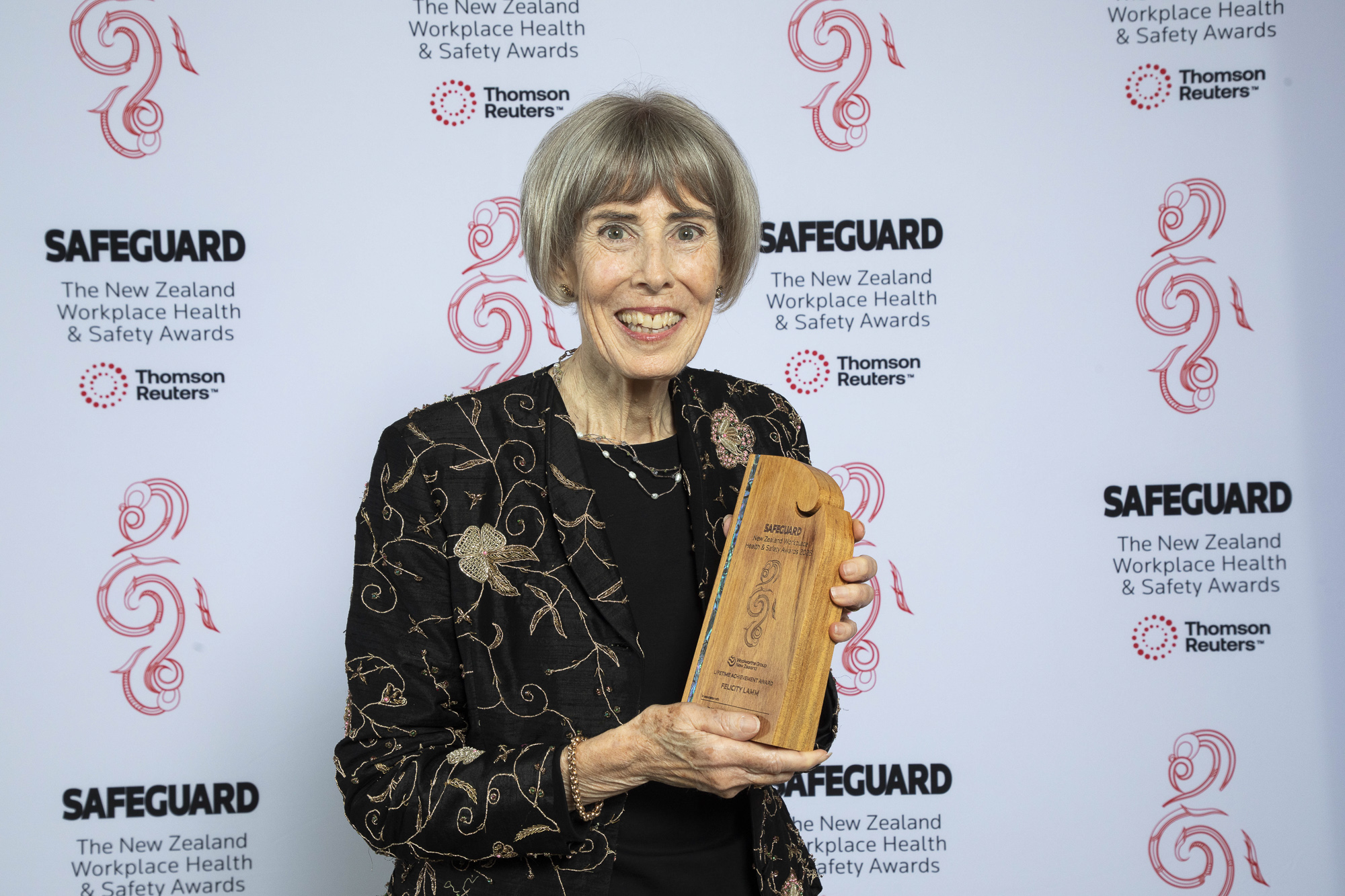
2025 Felicity Lamm
-
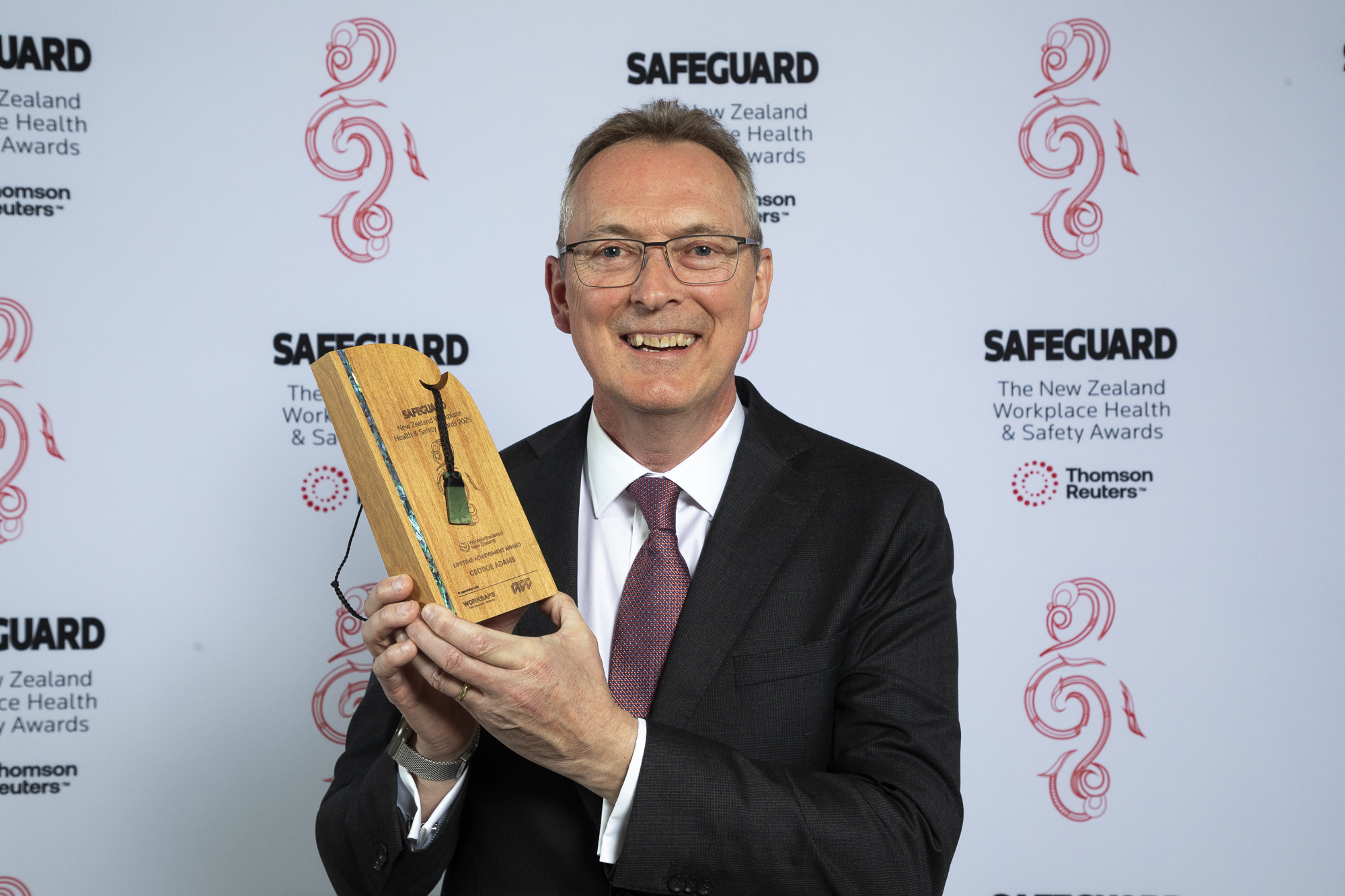
2025 George Adams
-

2024 John Skudder
-
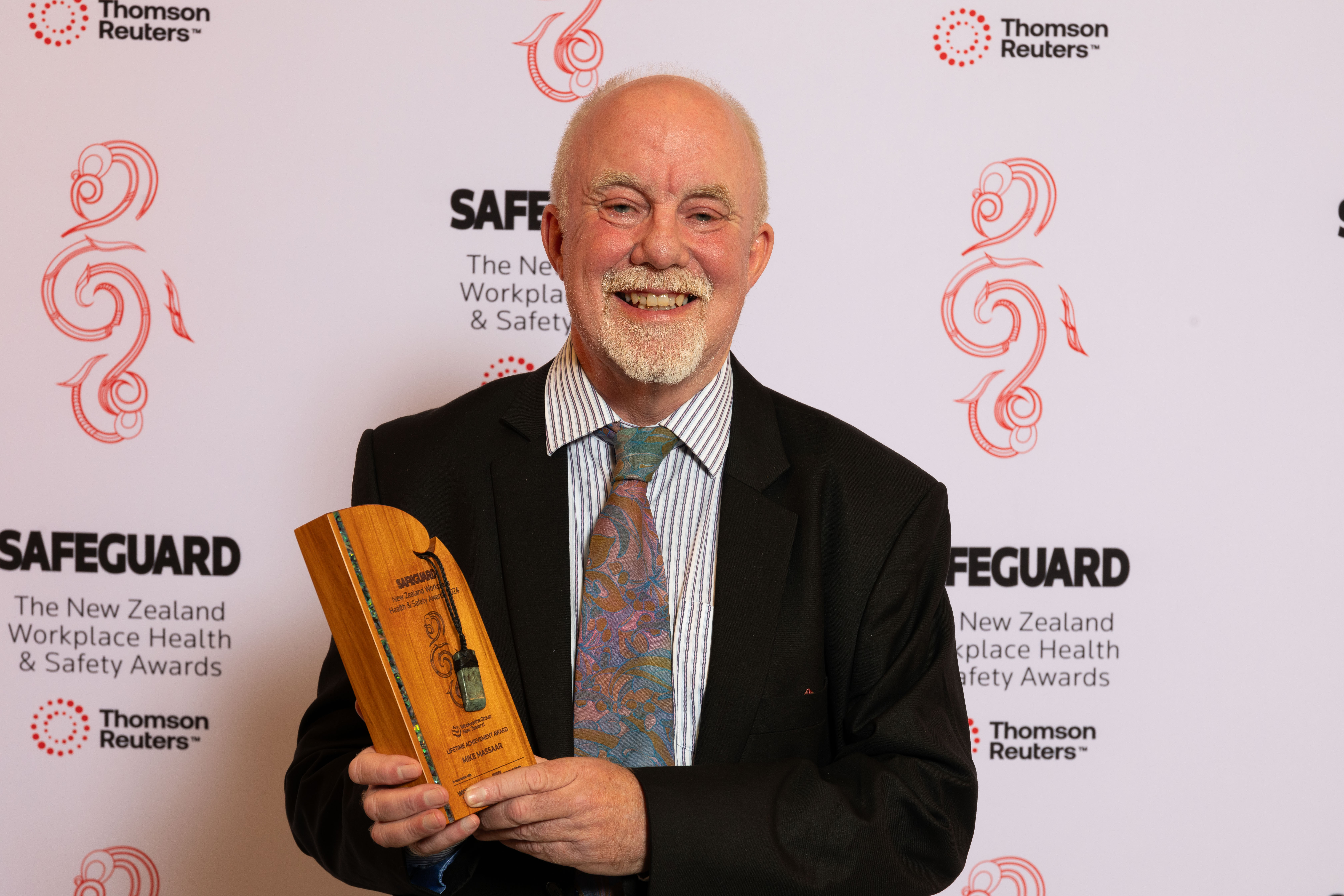
2024 Mike Massaar
-
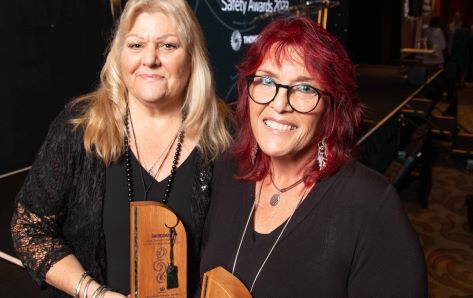
2023 Anna Osborne and Sonya Rockhouse
-

2023 Dr Chris Peace
-
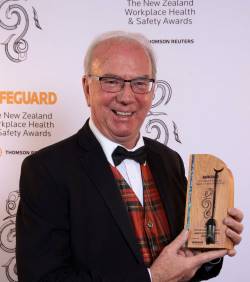
2022 Ian Laird
-
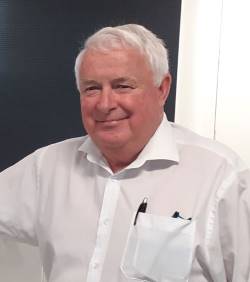
2021 Paul Jarvie
-
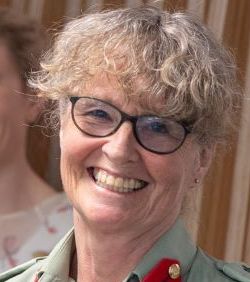
2020 Colonel Clare Bennett
-
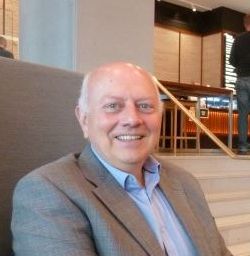
2020 Mike Cosman
-
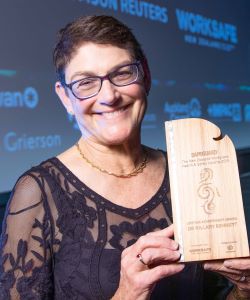
2019 Dr Hillary Bennett
-
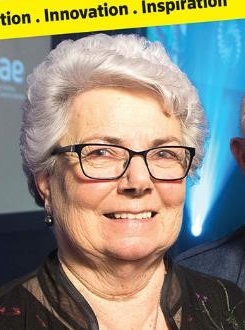
2018 Sandra Johnston
-
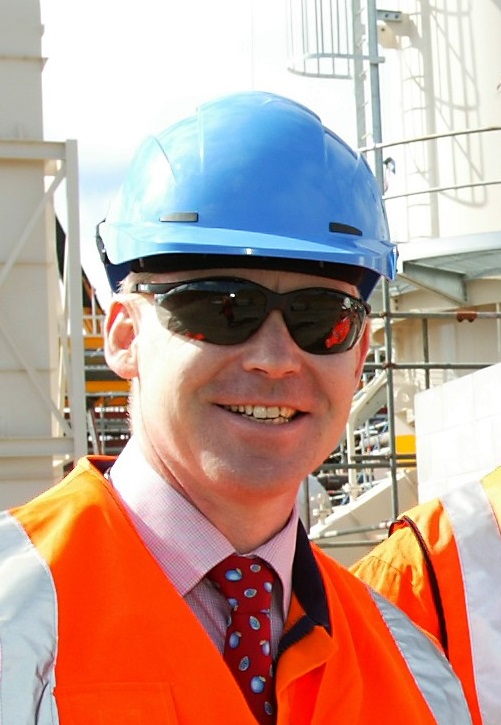
2017 Rob Jager
-
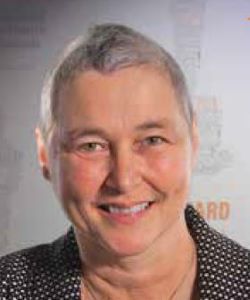
2016 Helen Kelly
-
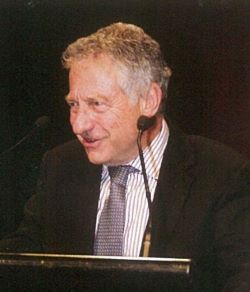
2015 Geoff Wilson
-
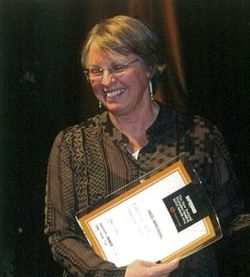
2014 Hazel Armstrong
-
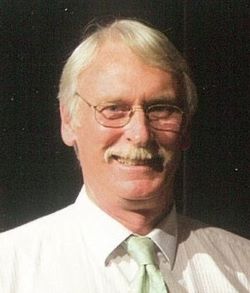
2013 Dave Feickert
-
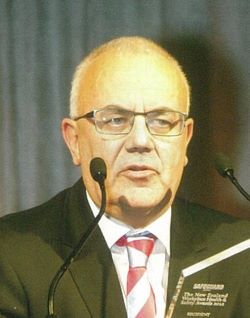
2012 Keith Stewart
-
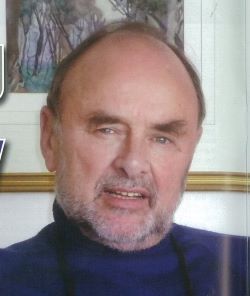
2011 Douglas Hay
-
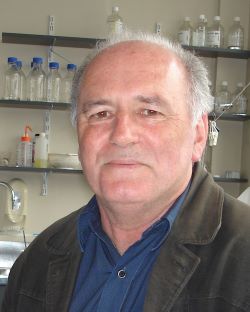
2010 Neil Pearce
-
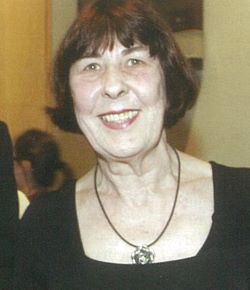
2009 Marlene Thomson
-
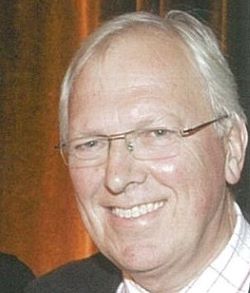
2009 Ross Wilson
-
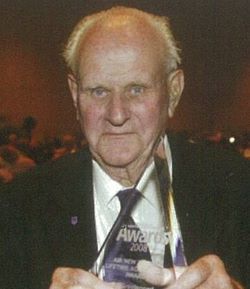
2008 Ed Grootegoed
-
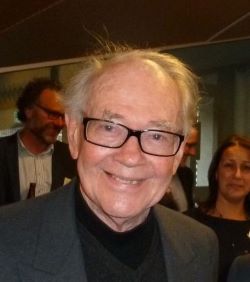
2008 Dr Bill Glass
2025 Felicity Lamm

An academic researcher, teacher and mentor, Felicity has for decades influenced how people think about health and safety and broader employment issues. Starting at the University of Auckland’s business school, she later joined AUT as co-director of the Centre for OHS Research, where she provided executive education programmes and completed more than 100 research reports, journal articles and book chapters. She supervised and mentored many Masters and Doctoral students, and led research clusters into the health & safety of vulnerable workers, in small businesses, and in specific industry sectors. Her networking ability has seen her support and collaborate with HASANZ, NZISM, CHASNZ, IOSH and the Business Leaders’ Health &Safety Forum. She has been an expert witness at enquiries into TranzRail and Pike River, and always taken an evidence-based approach. She is a cherished taonga of NZ’s health & safety ecosystem who has dedicated herself to improving conditions for workers.
2025 George Adams

George chaired the Business Leaders’ Health and Safety Forum for ten years until earlier this year. In this role he has supported hundreds of chief executives, directors and other senior leaders to better understand how health and safety starts at the top of an organisation – and that a healthy and safe workforce lifts productivity and boosts business outcomes. His leadership of the Forum has had a ripple effect, as the 435 members themselves influence hundreds of other businesses through their supply chains. George also chaired the Independent Forestry Safety Review, whose 2014 recommendations continue to influence the sector, and for seven years he chaired the Occupational Health Advisory Group to help WorkSafe with its health strategy. He is currently a member of Te Kahu Matai, WorkSafe’s leader’s advisory forum, and he co-delivers the Institute of Directors’ health and safety masterclass.
2024 John Skudder

Formerly of Meridian Energy, John has championed new approaches to health, safety and wellbeing and encouraged others to do the same. At Norske Skog he oversaw implementing a process of employee participation which was recognised at the first Safeguard Awards in 2005. An early adopter of e-learning, he developed courses illustrated with photos from the plant and made them available to contractors too. At ACC he developed interactive e-learning modules for the metal manufacturing sector. At Contact Energy he embraced the Safety-II approach together with the use of learning teams to look at how work is done rather than narrowly focusing on failure. In challenging the prevailing Zero Harm mantra he modelled the move away from health & safety people as experts with the answers to become enablers who help workers find their own solutions. More recently, at Meridian Energy he helped develop its award-winning Care Team wraparound approach to wellbeing.
2024 Mike Massaar

Recently retired after a long career with the Department of Conservation, Mike has championed a formal approach to critical risk and some difficult decisions flowing from that. He helped develop a critical risk standard which went beyond the norm with its focus on control verification and feeding assurance back to the governance group. He was influential in DoC moving away from quad bikes as the residual risk was too high, and in banning staff (and later volunteers and contractors) from travelling in Robinson helicopters on the same risk basis. He championed employee health monitoring – fire fighter fitness, pesticide use, hearing – and was early to realise the minimal value of TRIFR and that traditional audits do little to lift health & safety performance, leading him to embrace the SafePlus evaluation process. He recognised that driving cars was a critical risk requiring training, and was early to acknowledge psychosocial harm and violence/aggression to staff in remote places.
2023 Anna Osborne and Sonya Rockhouse

These two formidable women, who lost a husband and a son in the Pike River mine disaster of 2010, have reluctantly become public figures who have used this terrible experience to raise awareness of the need for higher safety and regulatory standards, greater justice in the system, and better treatment of the survivors of mass tragedies and their whānau. Their journey for truth and justice has included physically blocking the mine from being sealed and campaigning in the corridors of power for re-entry to find out more about what happened. They have worked with the Public Service Commissioner to develop a set of standards which empower survivors of tragedy, promises to be upfront with them, and to work together. Anna and Sonya have become advocates not just for their own cause but also for the cause of others killed and injured at work. They have acted as the conscience of the nation on health and safety.
2023 Dr Chris Peace

A lecturer in occupational health and safety with Victoria University of Wellington Te Herenga Waka, Chris has been working in health & safety and risk management for more than 40 years. He is often called upon as an expert witness in health and safety prosecutions. He has contributed to the development of multiple standards, including the influential AS/NZS 4360 Risk Management standard of 2004, and has long championed the risk management approach to anyone who will listen. His commitment to lifelong learning extends to presenting monthly webinars for NZISM on a wide range of topics. As an academic he has produced many research papers and journal articles, and has helped shape a new generation of health and safety practitioners, seeking to elevate their ambition to study at postgraduate level and acting as a wise and influential mentor to many.
2022 Ian Laird

Ian is an Associate Professor in Occupational Health and Safety in the School of Health Sciences at Massey University, where he leads the occupational health and safety programme.
He is also Associate Dean Research in the university’s College of Health.
With a Master’s in occupational hygiene and a Doctorate in physiology, Ian worked for the Department of Health and for ACC before joining Massey University in 1985.
As an academic researcher he has conducted work into the assessment of health hazards, the effectiveness of health & safety interventions in industry, and improving the way small businesses manage health & safety.
As a teacher, he has taught health & safety diploma and degree courses to students from all walks of life.
As an adviser, he served four years on the Occupational Health Advisory Group reporting to the board of WorkSafe to help it set up a framework to support occupational health.
A career highlight came in 2006 with a Fulbright Senior Scholar award and fellowship, which saw him spend several months as a visiting scientist at Harvard’s School of Public Health. The research collaboration and benchmarking which resulted continues to this day.
We are delighted to acknowledge Ian’s more than 35-year commitment to research and teaching health and safety. His work has influenced a significant proportion of health and safety practitioners in New Zealand.
2021 Paul Jarvie

Paul has worked for the EMA for more than 30 years.
He joined NZISM about the same time and served terms as national manager in the early 2000s, where he advocated that health and safety generalists needed to demonstrate the same level of professionalism as others in specialist roles, such as occupational health nurses and ergonomists.
He prepared the first set of professional standards for New Zealand H&S practitioners. He formed connections with IOSH and enabled NZISM members to be graded on its professional development framework and to use its continuous professional development facility.
Membership of NZISM increased dramatically as a result.
His connections with INSHPO saw him help write its framework setting out the competencies required for a practitioner and a professional.
Paul was instrumental in the formation of OHSIG as an association of associations – the predecessor of today’s HASANZ – to ensure a unified channel of communication to influence government.
He also designed the EMA H&S diploma course, and he was on the committee which developed the influential AS/NZS 4801 and 4801 standards.
Internationally, he has worked with the ILO on codes of practice, and with the World Bank to help it take into account H&S implications before making loans.
Paul’s work means that today it is regarded as normal for a health & safety generalist to have a good H&S qualification and to belong to a professional body.
2020 Colonel Clare Bennett

Clare is a psychologist who heads the NZ Defence Force’s integrated wellness strategy.
After enlisting in the army she progressed through the ranks as a field psychologist and in senior HR and strategic roles.
For seven years from 2007 she was with the IRD supporting improvements in leadership, wellbeing and business transformation.
In 2014 she was lured back to the NZDF and charged with developing a comprehensive mental health strategy. She created an Integrated Wellness Team which has produced a wrap-around support package available to NZDF staff and their families too.
She recognised that in order for the NZDF to fulfil its core mission – to maintain well trained personnel who can react at short notice to a crisis – people had to be mentally fit and resilient.
Crucially, she also realised that a culture shift was required so that people would feel comfortable seeking help for psychological distress – and that this is a strength, not a weakness.
The wellness strategy has enabled these outcomes by organising around four key actions and a suite of well received resources, including Staying at the Top of Your Game, a comprehensive self-help guide.
These resources are so well regarded that they have bee widely adapted and adopted by the wider government sector.
We are delighted to acknowledge Clare’s success in shifting the culture around mental health in the defence force and her wider influence across the public sector.
2020 Mike Cosman

Mike has the rare distinction of having spent his entire working life in health and safety.
As a new graduate he joined the UK’s Health and Safety Executive in January 1979 and swiftly progressed through the ranks of the inspectorate, where he helped lead the construction and healthcare programmes.
After his move to New Zealand in 2005 to work for the Department of Labour he continued to seek opportunities to influence health and safety at system and sector level.
A couple of years later he moved into a consultancy role, which after Pike River saw him appointed to the Independent Health and Safety Taskforce. Within the Taskforce he advocated for significant change, and the Taskforce’s report bears testimony to his influence.
From the Taskforce emerged WorkSafe New Zealand as a separate agency, and the Health and Safety at Work Act 2015.
Soon afterwards Mike was appointed to a review of the forestry sector following an unusually high number of fatalities. The outcome was the Forest Industry Safety Council and its ongoing initiatives in one of the most unforgiving industry sectors.
Mike’s influence as a consultant is most often found at a governance level, where he acts as independent advisor on multiple boards.
He seeks to give back too, as chair of the NZ Institute of Safety Management and mentor to many practitioners.
We are delighted to acknowledge Mike’s career success and his undimmed enthusiasm for protecting people at work.
2019 Dr Hillary Bennett

Hillary is a registered psychologist who has made a significant impact on the practice of health & safety since her arrival in New Zealand some 25 years ago.
She was heavily involved in the Department of Labour project which developed a pioneering safety culture assessment tool for forestry.
Many years later she built on that work to develop it into the unique Growing our Culture forestry programme launched last year.
Hillary has also significantly changed how leaders think about health & safety.
With her business partner Dr Philip Voss she developed a model of what great executive leadership in health & safety looks like, and used it to create a leadership assessment tool and training course that has been widely adopted, in New Zealand and abroad.
She has also prepared guides for CEOs in being health & safety leaders, and in dealing with the emerging issue of workplace mental health.
Hillary has also championed Safety 2 concepts and has put them into practice with forestry companies and their harvesting crews.
She is comfortable engaging with frontline workers as much as executive leadership teams.
We are delighted to take this opportunity to acknowledge Hillary’s contribution in pioneering new ways of thinking about health and safety and in finding highly accessible ways to put that thinking into practice.
2018 Sandra Johnston

Sandra began work as an industrial chaplain more than 30 years ago.
She trained with the Australian Critical Incident and Stress Association, and was involved in its transformation into a trans-Tasman body, known as Crisis Intervention Management Australasia (CIMA).
She went on to lead the creation of the national trauma network for Vitae.
After the 2011 Canterbury earthquake she organised Vitae’s trauma teams to work in Christchurch on rotation for 22 months, supporting USAR and coronial services among many others. She worked at the coalface of this effort, alongside people from other trauma response groups, with only brief respites to return home to the Bay of Plenty.
Sandra is currently serving as president of CIMA and continues to train members of Vitae’s trauma network, as well as being a trauma responder on its national team.
We are delighted to take this opportunity to acknowledge Sandra’s commitment over many years to the field of psychological trauma and supporting the mental health of people at work.
As well as helping to lead the development of the field of trauma response in New Zealand, she has also been at the front line delivering services to working people over more than 20 years.
In doing so she has pioneered the significance of mental health at work and has won recognition for the debilitating effects of trauma on health, long after the initial incident.
2017 Rob Jager

Rob Jager has played a role in nearly every significant health and safety initiative in New Zealand for almost ten years – sometimes as a leader out front, sometimes as an influencer behind the scenes.
In 2008 he became chair of Be Safe Taranaki and championed health and safety when to do so as a senior executive was not fashionable.
He was a member of the steering group that put together the Business Leaders’ Health and Safety Forum in 2010, and was the forum’s chair from 2011 to 2015. In that role he helped champion the creation of the Canterbury Safe Rebuild Charter.
Prior to the Pike River disaster in 2010 the notion that chief executives and directors have ultimate responsibility for their organisation’s health and safety was a minority view. Rob was a staunch member of that minority.
He was appointed chair of the Independent Taskforce created after Pike River to advise the Government on the best course of action.
The Government adopted almost all of the Taskforce’s recommendations, including the creation of a stand-alone health and safety regulator and the adoption of Australia’s health and safety legislation.
When ten forestry workers were killed in 2013 and the sector was in a state of shock, Rob used his influence to urge the creation of an independent review of safety in forestry.
He was appointed to the board of Air New Zealand in 2013, and has chaired the airline’s safety committee since 2014.
This extensive range of commitments means Rob has spent much time away from his family, but he would regard that sacrifice as part and parcel of his view that leaders must genuinely care about the people they lead.
Clearly, he does.
2016 Helen Kelly

In recognition of her tireless commitment to making sure working people are safe at work.
During Helen’s time as president of the New Zealand Council of Trade Unions she pursued safer workplaces with focused determination. And she still does.
Her approach to health and safety has always come from a position of deep empathy for the real people who live and die with the consequences of being unsafe at work.
Using all the tools at her disposal – from the judicial system right though to Twitter – she has shone daylight into some gloomy caves of poor health and safety practice.
Her work to publicise the alarming number of workplace deaths and serious injuries in the forestry sector deserves special mention and recognition. She identified that something alarming was happening and set out to do something about it. With help from others, she united the industry to accept that change was not only necessary but essential.
She got all parties together – owners, managers, contractors, crews, workers, unions, and the regulator – which was remarkable given how fractured the relationships had been previously.
The explosion at Pike River Mine and its aftermath has been another area of Helen’s focused energy, which has contributed to better health and safety law for all New Zealanders. She has been determined to secure justice for the 29 men killed at Pike and for those left behind.
Farming has been another area of focus for Helen, much to the chagrin of Federated Farmers. Helen has shown us all how effective Twitter can be!
(NOTE: Helen Kelly, who accepted this award in person while seriously ill, died later in 2016)
2015 Geoff Wilson

Geoff Wilson has spent much of the last 50 years trying to make New Zealand workplaces safer and healthier.
He started as a cadet with the Department of Labour in 1965 and went on to hold a wide variety of roles, including Deputy Chief Inspector of Factories. After the Occupational Safety and Health service was formed in 1988 he led the working party which developed the concept of One Act, One Authority to replace the confusing range of legislation and agencies which then covered workplace health and safety.
He was seconded for a couple of years to run the office of the then Minister of Labour, Bill Birch, and was involved in preparing the initial framework for what would become the Health and Safety in Employment Act.
Back with the Department of Labour, he played a key role in supporting the establishment of Site Safe in the late 90s.
Later, as ACC’s workplace programmes manager, he was instrumental in developing injury prevention for high risk industries, and supporting implementation of the WSMP and Partnership programmes. While at ACC he also lead implementation of the first New Zealand Injury Prevention Strategy.
More recently he has worked for Site Safe, including acting as chief executive for a time in 2013. Today he continues his work in community safety as a Trustee of the Safe Communities Foundation New Zealand.
2014 Hazel Armstrong

Hazel Armstrong’s involvement in health and safety began as an advocate within the union movement, first with the EPMU and later with the CTU. She has been the author and editor of the workbook material the CTU supplies to the health and safety representatives it trains.
She has been a member of the board of ACC, and since then has been spokesperson for the ACC Futures Coalition, a lobby group which aims to keep ACC legislation in line with the original principles laid down by the late Sir Owen Woodhouse.
In 2000 she was involved in submissions to the ministerial enquiry into TranzRail, and she chaired a working party into the safety of the Otira tunnel following the death of a railway employee.
She has written two small but hard hitting books, one on the ACC scheme and another on railway safety. In 2013 she authored a submission to the United Nations alleging ACC is discriminating against hearing loss claimants by introducing a 6% threshold of hearing loss required before a claim can succeed.
This year she has been appointed as one of three members of the independent enquiry into forest safety. And as a lawyer, she runs a practice specialising in health, safety and ACC issues.
2013 Dave Feickert

The Pike River mine explosion nearly three years ago has forced us all to re-evaluate how we practice health and safety. So it is appropriate that this year the judges have decided to acknowledge the work of Dave Feickert, who has dedicated the last ten years to improving the coal mining industry, with a particular focus on mine safety in China.
Coal-based energy has helped drive the Chinese economic boom of the last 20 years, but it has come at a terrible human cost. Dave has worked extensively as a consultant to the Chinese government as it seeks to reduce the huge annual death toll in its coal mines.
He has also been engaged as an advisor by the European Union as it lends its expertise to help China improve its mine safety performance. He has evaluated mine safety training programmes set up between China and the EU, and between China and the United States.
In 2007 he was instrumental in setting up exchange programmes between mines in New Zealand and China to share ideas on improving mine safety. In 2009 the Chinese government awarded him the Friendship Prize for Foreign Experts for his work on mine safety.
More recently he has been helping to advise the Pike River families on their plans to retrieve the bodies of their loved ones.
2012 Keith Stewart

This year the judges acknowledged the work of a public servant whose interest in safety was sparked years ago during the period he spent working on the construction of the BNZ tower in Wellington.
Keith Stewart has been with the Department of Labour for more than 35 years in a variety of operational and corporate management positions, including Wellington Service Manager, Head of the Business Support Unit, Acting National Operations Manager, and National Support Manager.
He is currently the Department's health and safety practice leader for the Southern Region. However this job title does not do justice to the reality of his role.
He is the go-to guy when things get tricky, as has been seen in his involvement as investigation leader for both the IcePak coolstore fire and explosion at Tamahere, and more recently for the Pike River mine explosion.
He has been a mainstay of the Department of Labour through some challenging times, including more restructures than you can count. His knowledge, wisdom and common sense approach has helped mould the ideas of all those who have come into contact with him.
And when death and disaster strikes, he is the cool head and the willing and dedicated public servant who will always put his hand up to provide leadership and assistance.
2011 Douglas Hay

Douglas Hay is being acknowledged primarily for his work in setting up New Zealand's first academic course in workplace safety management, at Massey University in 1979.
After completing degrees in science and engineering at Auckland and Canterbury universities he went on to the UK, where he completed a Masters degree in industrial safety at Imperial College, London.
In the late 1970s he was appointed a foundation member of ACC's Occupational Safety Advisory Council, and with ACC funding was able to establish the safety management programme at Massey.
In his more than 25 years at the university Doug taught and influenced many people who have gone on to senior roles in workplace health and safety management, in the private and public sectors.
In the early 1990s he was approached by the International Labour Organisation to act as chief technical advisor for a major project in China. He helped set up a national training centre for labour inspectors in Beijing, and advised on upgrading Chinese H&S legislation.
A few years later Doug was again asked by the ILO to review the health and safety needs of a number of countries, including Nepal, the Philippines, Thailand and Bangladesh.
Doug retired from the university in 2005 and continues to do consultancy work.
He has made an exceptional contribution to the practice of health and safety, not only by influencing students over three decades but also by influencing the development of health and safety internationally.
2010 Neil Pearce

Neil is the director of Massey University's Centre for Public Health Research, based in Wellington. He has been active in occupational health research for more than 20 years, specialising in occupational cancers and occupational respiratory disease.
AS a research leader, he was director of the Asthma Research Group of the Wellington School of Medicine from 1996 to 2000, and for the last ten years has been director of the CPHR.
He also headed the National Occupational Health and Safety Advisory Committee, which for five years from 2004 produced a series of benchmark reports on the state of occupational health and safety in New Zealand, with recommendations for improvement.
Under his leadership, the risks of respiratory disease and casual exposures in welders, farmers, mussel openers, hairdressers, asbestos workers, saw mill workers, and plywood mill workers have been identified.
His research has also identified elevated risks of cancer in various occupational groups, including producers and sprayers of phenoxy herbicides, meat workers, pulp and paper workers, farmers, and timber workers exposed to pentachlorophenol.
A recent study conducted by the CPHR under his leadership has for the first time assessed the current and future burden of occupational ill health in New Zealand.
Professor Pearce has made a major contribution in placing occupational health firmly on New Zealand's research and policy agenda.
2009 Marlene Thomson

For more than 20 years Marlene Thomson has been an influential figure in occupational health.
A long-time member and office-holder of the New Zealand Occupational Health Nurses Association, she has been a respected mentor to many nurses.
Marlene joined the Department of Labour in 1990 as Chief Advisor - Nursing. In this role she was instrumental in the transfer of the occupational health function from the Department of Health to the Department of Labour.
She was therefore a key figure in introducing the health side of health & safety into the DoL.
In 1992 Marlene was appointed as Manager - Health & Technical, which saw her recruit a diverse group of specialist staff, including scientists, engineers and medical practitioners. In this role she continued to introduce a health viewpoint throughout the organisation.
Later in her career Marlene was appointed manager of marketing and communications, where she pioneered a social marketing approach to help engage employers and the wider public in the work of the DoL to prevent deaths, injuries and illness arising from work.
She was one of the first to recognise the value of an integrated approach to occupational health and has striven consistently behind the scenes to this end, both at the DoL and in her subsequent career with Parliamentary Services, and also with the NZOHNA.
She has always encouraged practitioners to further their education, and gained an MBA herself in 2002.
Marlene is a role model who is able to relate to all sectors of the health and safety community and is able to represent occupational health nursing at the highest level.
She remains active within the NZOHNA, where this year she has taken on the role of professional development coordinator.
Marlene is an inspiration to occupational health nurses in New Zealand who has held senior strategic positions but has always remained true to her professional nursing background.
2009 Ross Wilson

Ross has been a key figure in supporting the involvement of workers in decisions which affect their health and safety, and in influencing Parliament to change legislation accordingly.
He was also instrumental in the introduction of free health and safety training for elected health and safety representatives, of whom more than 30,000 have been trained since 2003.
Ross has been a public figure since at least 1999, when he became president of the NZ Council of Trade Unions, but his involvement and influence over the health and safety of people at work dates back many years before then.
His awareness goes back to the mid-1970s, when as a young lawyer he represented injured workers seeking redress through the courts in the days before ACC cover.
In 1979 he began a 28-year career in the union movement when he joined the National Union of Railway Workers as assistant general secretary (industrial). His union colleagues credit Ross with building a deep and lasting awareness of the importance of health and safety.
A visit to Canada in the 1990s inspired him to introduce Workers Memorial Day each 28 April, an awareness-raising tradition which continues to this day nationwide.
As general secretary of the Rail and Maritime Workers Union, Ross promoted the active role of staff in helping to manage the return to work of injured colleagues. The template he championed has since been picked up by other unions working with other employers.
This initiative reflects his belief that the most effective results in health and safety arise from a partnership approach involving Government, employers, and unions.
Similarly, when the Government was looking to amend the health and safety legislation in 2002, Ross pressed for legislative recognition of the right of workers to refuse dangerous work, to participate in decisions affecting their health & safety, and to elect safety reps with powers to issue hazard notices.
In summary, over a long career as a lawyer and unionist, Ross has consistently acted to protect the health and safety of those most vulnerable to injury and illness.
2008 Ed Grootegoed

Ed Grootegoed and his late wife Lois Syret knew little about asbestos until Ed was diagnosed with an asbestos-related lung condition in the early 1990s. Soon afterwards, however, they both became active members of the Asbestos Diseases Association, travelling the country in a campervan to give whatever support they could to sufferers of mesothelioma and other asbestos-related cancers.
Alongside this humanitarian role Ed also became a passionate campaigner, learning all he could about the asbestos issue and tirelessly lobbying politicians, government agencies and industry groups about the need for tighter controls, better research to determine the extent of the New Zealand problem, and effective strategies to deal with it.
He produced reports and letters by the hundred, and Lois faithfully typed them all.
In 2000 he was invited to speak at the Global Asbestos Congress in Brazil, sharing a podium with doctors, scientists, lawyers, academics and politicians from arund the world. He admitted to initial anxiety, but came home delighted to have been part of a group that understood his point of view so well and shared his goals.
Sadly last year Lois died, but Ed's crusade continues. When Safeguard called to tell him of his selection for this award, he was quick to get beyond the formalities so he could discuss a new WHO report that shows asbestos to be a far more significant causal factor in lung cancers than has previously been suspected.
In their retirement years this Kelston plumber and his wife have done more to advance the anti-asbestos cause and aid asbestos victims in New Zealand than any number of government initiatives or academic projects.
2008 Dr Bill Glass

In an astonishing 50 years as an occupational physician, Dr Bill Glass has been a sometimes strident voice in support of ordinary workers, urging both his colleagues and ACC to take them seriously and accept that they, not doctors, are the experts when it comes to their work and the way it affects them.
He became interested in occupational medicine while at Otago Medical School in the late 1950s and went to England to complete a postgraduate qualification in the field at the London School of Hygiene and Tropical Medicine, before returning to New Zealand to work as deputy medical officer of health in Auckland.
Last year Bill celebrated his 50-year career with a presentation to the Australian and New Zealand Society of Occupational Medicine conference in Queenstown. In a speech that cited the ideas of Jesus Christ, Mao Tse Tung, Hone Tuwhare and Bernadino Ramazzini among others, he told his fellow practitioners that occupational physicians needed five characteristics: humility, empathy, understanding, integrity, and courage.
Anyone who knows him with agree that these are the qualities that he has brought to every aspect of his diverse career, which has included work in private practice, with trade unions and government agencies, at medical schools, and on a wide range of public bodies, including the panel of the Notifiable Occupational Diseases System and the National Asbestos Medical Panel, which he still convenes.
He has also been a key player in medico-legal work, providing expert evidence in support of many people seeking ACC cover for work-related health conditions or gradual process injuries.